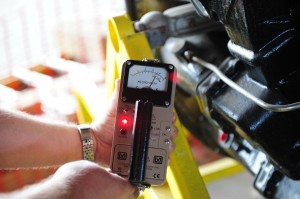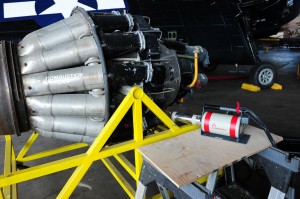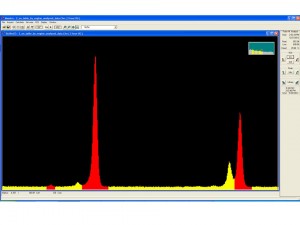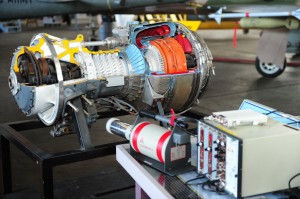During a trip to Cape May NJ while visiting my in-laws over a year ago, the whole family spent an afternoon at the Naval Air Station Wildwood Aviation museum. It is a very hands-on, climb-in, bump-your-head-on kind of museum. My father-in-law and I climbed into a Vietnam era aircraft and I was happy to see a fully instrumented control panel loaded with authentic radium bearing meters and dials. Anxious to demonstrate the large gamma field that I could almost feel, I went back to the car to retrieve my micro-R meter. I re-entered the museum armed with the radiation meter, but never made it back to the airplane. Rather, something else in the hangar-based museum was spicy and diverted my attention! The counter quickly led me to a jet engine sitting on display some twenty feet away. There was a clear point of maximum gamma activity on the order of 5 mr/hr on contact. I asked around, but no one was aware of what might be radioactive in the engine. I vowed that someday I would return with a gamma ray spectrometer to get to the bottom of this.

This Memorial day weekend was the promised return, plus a nice weekend spent with family and friends. Several days of planning, gathering the detector and necessary supporting electronics, a 30 liter Dewar of liquid nitrogen, a power strip, and an extension cord. The ‘hot’ engine.
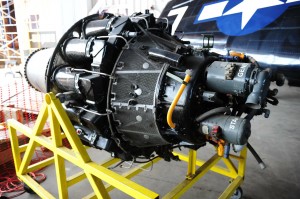
Michelle, her mom and dad, and I returned on Sunday to the Aviation Museum, but to my horror found that the museum floor had been re-arranged, and the engine that I recalled could not be seen anywhere. Cool thinking prevailed and I again returned to the car to get the portable radiation meter. Much to my delight, the meter now unveiled two radiation emitting engines, neither of which I remembered seeing the previous year. This could be detected up to 20 feet away.
The maximum reading was 1 mr/hr in between exhaust manifolds.
There were no identifying marks on the first engine, so I can not tell you what type it is, however with the High Purity Germanium (HPGe) detector, I can now tell you what radioactive material it is comprised of. Several ten minute live-time counts were performed. The detector was set close to the engine and then as far away as possible to attain a background count, and another with three known standard sources for energy calibration.
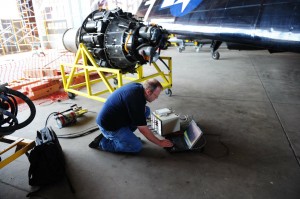
Collecting data with the detector on the floor the dead time was still 6%. And I attempted a background count, but not very successfully.
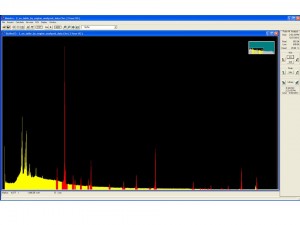
Analysis of the spectral data revealed several strong lines, the most prominent at 238.62, 338.35, 583.25, and 969.04 keV. There is strong agreement with the Thorium-232 spectrum library. Further confirmation is gained by comparing the relative counts between the measured 911 and 969 keV peaks. In the Th-232 decay chain the Ac-228 decays into Th-228 with the two gamma rays of relative branching ratio at 64% which perfectly matches my measured to be 64%.
On to the second radioactive engine. I only took a single 10 minute count at the second engine, labeled as a Cobra helicopter jet engine. Its energy spectrum was identical to the first engine, so at that point it became clear the material was common to the construction of various jet engines.
I have since learned that these engines use an alloy called MagThor – which is a high temperature and high strength material. Indeed the thorium is responsible for the detectable radiation.
